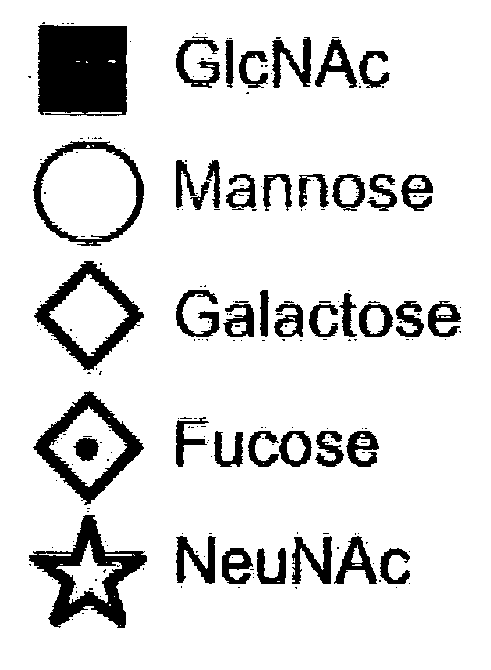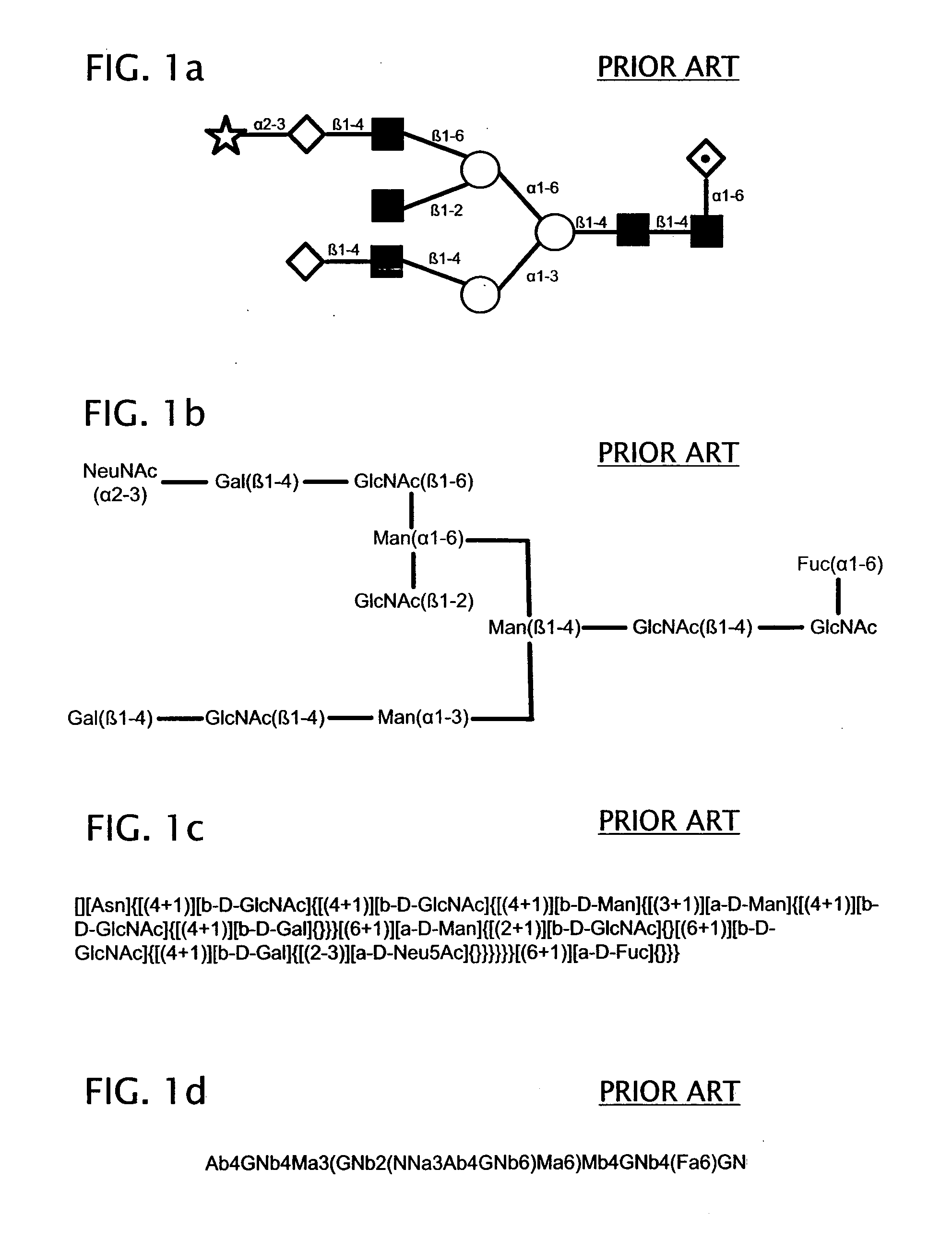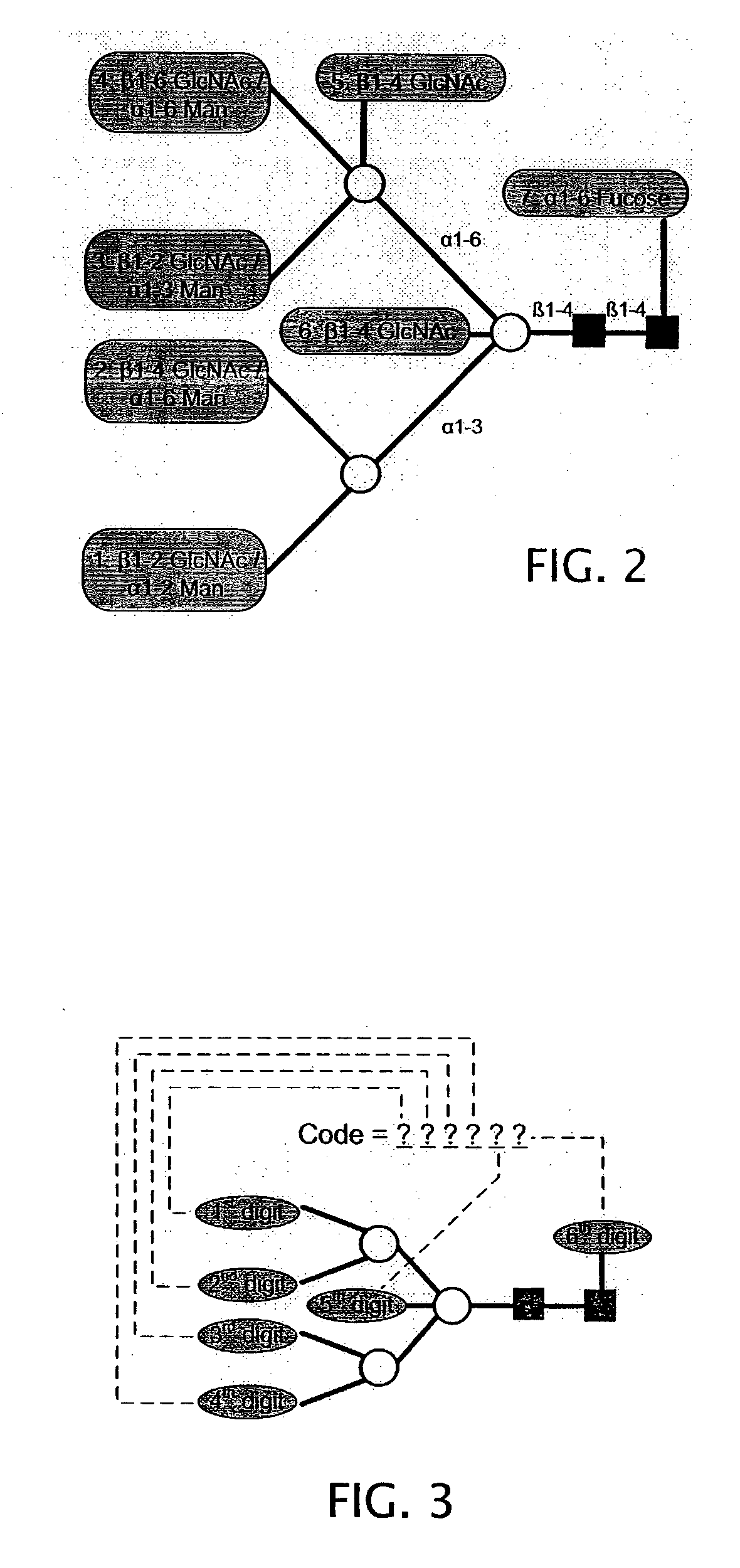System and method for representing n-linked glycan structures
a glycan and structure technology, applied in the field of system for describing glycan structures, can solve the problems of insufficient comprehensive description of glycans in computer readable format, ambiguous iupac descriptions, and lack of suitable digital format, so as to achieve the effect of convenient storage and interpretation
- Summary
- Abstract
- Description
- Claims
- Application Information
AI Technical Summary
Benefits of technology
Problems solved by technology
Method used
Image
Examples
first embodiment
[0058]In the invention, shown in FIGS. 4a-4c, a six character alpha-numeric code is used to describe glycan structures on the basis of the monosaccharide chains attached to the different branches of the core structure shown in FIG. 2. The first four characters correspond to the four possible antennaries linked to the upper and lower core mannose residues, while the fifth and sixth characters represent a bisecting GlcNAc and a fucose group respectively. FIG. 3 shows the possible branching from the core structure and also, the corresponding position of each character for the antennary.
[0059]The first four branches are represented by odd numbers if the branch is a complex type while high-mannose branches are represented by letters. Complex branches terminating as a GlcNAc, galactose or neuraminic acid residue are represented by the number 3, 5 or 7 respectively. The mannose residues of hybrid and high-mannose N-linked glycans are represented by the letters A-F, with each letter designa...
second embodiment
[0062]Table 1 lists which linkage each digit-letter pair corresponds to in the GlycoDigit code. High mannose and hybrid structures can be represented by using the first four digit-letter pairs to correspond to α1-2, α1-3 and α1-6 linked mannose chains attached to each of the two mannose residues in the core structure as shown in FIG. 2. In order to differentiate between complex and high mannose branches, the number of mannose residues is represented by letters instead of numbers. Thus, a branch containing one GlcNAc molecule would be represented by ‘1a’, while a branch containing one mannose residue would be represented by ‘Aa’. Higher letters correspond to higher numbers of mannose in the branch, i.e., B=2, C=3, D=4, etc. If no glycan is attached at a particular branch linkage it is represented as ‘0x’. The letter ‘u’ is reserved to depict monosaccharides that are attached in an unknown linkage. For the sixth digit-letter pair representing the bisecting GlcNAc there are only two po...
PUM
| Property | Measurement | Unit |
|---|---|---|
| Length | aaaaa | aaaaa |
| Structure | aaaaa | aaaaa |
Abstract
Description
Claims
Application Information
 Login to View More
Login to View More - R&D
- Intellectual Property
- Life Sciences
- Materials
- Tech Scout
- Unparalleled Data Quality
- Higher Quality Content
- 60% Fewer Hallucinations
Browse by: Latest US Patents, China's latest patents, Technical Efficacy Thesaurus, Application Domain, Technology Topic, Popular Technical Reports.
© 2025 PatSnap. All rights reserved.Legal|Privacy policy|Modern Slavery Act Transparency Statement|Sitemap|About US| Contact US: help@patsnap.com



